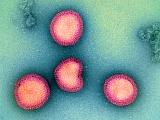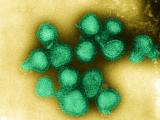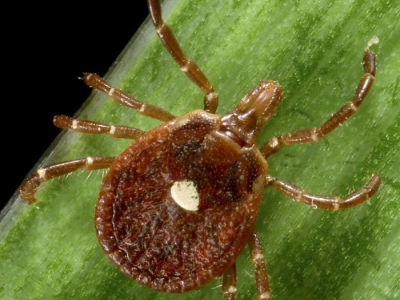US influenza activity is continuing at a bustling pace that is expected for this time of year, led by the former pandemic H1N1 strain that's making media headlines in some regions because of its ability to seriously sicken working-age adults, alongside other risk groups that flu typically targets.
Most flu indictors rose last week, with 35 states now reporting widespread activity, up from 25 the week before, according to the latest update from the US Centers for Disease Control and Prevention (CDC).
The percentage of clinic visits for flu-like illness rose slightly to 4.4%, but the percentage of respiratory samples that tested positive for influenza dropped a bit, from 26.7% to 26.2%, according to the CDC.
The cumulative incidence of hospitalizations for the season jumped to 9.7 per 100,000 population last week, up from 5.8 per 100,000 the week before, a pattern that the CDC has said is typical as the flu season progresses. Though the youngest children and seniors are the most affected age groups, adults age 18 to 64 make up 61% of the hospitalized patients, according to the CDC.
Peak probably still to come
Michael Jhung, MD, MPH, a medical epidemiologist in the CDC's influenza division, told CIDRAP News that health officials expect to see high flu activity levels continue in the weeks ahead, and it's too early to say that the season has peaked.
Illness levels are rising in many areas, and there is a wide spectrum of disease, neither of which is unexpected, he said. The dominance of the 2009 H1N1 strain results in a different age pattern than seen with other seasonal flu strains, which may surprise to some people, he said. "But it does make sense for H1N1."
Generally, seasonal flu exacts its biggest toll on the very young and those age 65 and older. However, the 2009 H1N1 virus can also cause severe illness and death in children and younger and middle-aged adults, even in those who were previously healthy—events that generate media coverage and prompt fresh warnings to be vaccinated.
For example, the California Department of Public Health (CDPH) said today that flu activity in the state is showing a steady increase and is now widespread. Deaths from flu in people younger than 65 are reportable in California, and so far the state has confirmed 7 deaths—all in adults—and is investigating 28 more.
At a media telebriefing today, Gil Chavez, MD, MPH, state epidemiologist and deputy director of the state's Center for Infectious Diseases, said hospitalizations and deaths from flu this season are running a little higher than at the same time last season. "It's not a significant deviation, but something to keep an eye on."
He said the 2009 H1N1 virus is showing the same pattern it followed during the pandemic months. "H1N1 doesn't discriminate on the basis of age," Chavez noted.
Vaccine still available
Jhung said so far there hasn't been a run on flu vaccine, but since it is getting late in the season, some people may need to visit more than one provider to find it. He said there is still vaccine remaining; vaccine makers expected to make as many as 145 million doses for the US market, and so far 131 million have been distributed.
Four more pediatric flu deaths were reported to the CDC, three of them linked to the 2009 H1N1 virus, bringing the season's total so far to 10. Overall, the percentage of deaths from flu and pneumonia rose above the seasonal baseline to 6.9%, but it remained below the epidemic threshold.
Antiviral resistance monitoring identified three more 2009 H1N1 samples that showed resistance to oseltamivir (Tamiflu), boosting the total to 13 so far. A report yesterday in Eurosurveillance on a resistant H1N1 cluster in Sapporo, Japan, said some of the US oseltamivir-resistant samples reported this season might be part of a cluster in Louisiana and Mississippi. However, Jhung said he wouldn't characterize the cases as a cluster, because that requires strong epidemiologic links between cases.
"There have been several cases, but it's still just over 1%. In the big picture, it's still very low," Jhung said. "We expect treatment and prophylaxis to work very well."
An active season in Canada
Flu season patterns in Canada are similar to those seen in the United States, and the Public Health Agency of Canada (PHAC) said lab detections, doctor visits for flulike illness, hospitalizations, and prescriptions for antiviral medication all increased last week. The 2009 H1N1 virus is the dominant strain and accounts for 96% of all subtyped influenza A viruses.
The PHAC said that compared to last flu season it is seeing a significantly greater proportion of flu detections in adults ages 20 to 64 , which it expects with the H1N1 strain. The country's hot spot is still Alberta, where flu remains widespread in the regions around Calgary and Edmonton.
Increased demand for the flu vaccine in Alberta, Saskatchewan, and the Northwest Territories has led to scarce supplies, and the PHAC is buying more doses that have been set aside by its suppliers, the Canadian Press reported today. Officials said potential spikes in flu activity in the central and eastern part of the country could add to worries over shortages.
In Europe, flu indicators suggest that the flu season is slowly starting, according to the latest surveillance report today from the European Centre for Disease Prevention and Control (ECDC). That assessment was based on an increasing percentage of respiratory specimens testing positive for flu in 11 countries, as well as reports of sporadic-to-widespread activity in many countries.
Spain reported medium-intensity activity, Portugal reported geographically widespread activity, and increasing trends were reported by six countries: Bulgaria, Ireland, Malta, Portugal, Spain, and the United Kingdom.
In a separate flu virus characterization report, the ECDC said its analysis of specimens collected from September through December reveals that influenza A viruses are dominant so far, with H3N2 outnumbering 2009 H1N1 by 2 to1.
See also:
Jan 10 CDC weekly FluView report
Jan 10 CDPH press release
Jan 10 PHAC FluWatch report
Jan 10 Canadian Press story
Jan 10 ECDC weekly flu surveillance report
Jan 10 ECDC flu virus characterization report
Jan 9 CIDRAP News item "Japanese report H1N1 cluster resistant to oseltamivir, peramivir"





















